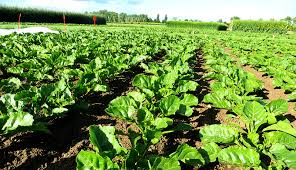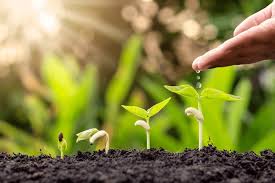Plant growth analysis is an explanatory, holistic, and integrative approach to interpreting plant form and function. It uses simple primary data, such as weights, areas, volumes, and contents of plant components, to investigate processes within and involving the whole plant. These calculations can otherwise be tedious, especially when statistics are involved.
The simplest possible approach is taken by calculating the most fundamental growth parameters using purely classical methods across one harvest interval (the period of time between two successive harvests).
This contrasts with the ‘functional’ or ‘dynamic’ approach, which involves using multiple harvests and fitted curves, either parametric or form-free. It also contrasts with the ‘combined’ approach, where curves are fitted to classically derived values.
This article focuses on calculating the most fundamental growth parameters according to purely classical methods over one harvest interval.
Read Also: How to Grow, Use and Care for Wiegand’s Sedge Grass (Carex wiegandii)
Key Growth Factors in Agriculture: Leaf Area Index, Dry Matter Production, and Growth Rates

The functional leaves, dry matter production, and leaf area index are the main growth factors that may directly affect grain yield. Growth analysis parameters, such as crop growth rate (CGR), are products of the leaf area index (LAI).
Relative growth rate (RGR) measures the increase in dry matter with a given amount of assimilatory material at a specific point in time, while net assimilation rate (NAR) is the net gain in total dry matter per unit leaf area per unit time.
Traditional Plant Growth Analysis and Yield Component Analysis
In traditional plant growth analysis and yield component analysis, both methods use simple plant characteristics to generate more complex indices related to plant growth or productivity.
The traditional approach views plant growth as the result of net rates of production, which contribute material as plants persist over time. Some of the biomass accumulated may be deposited in constituents of special interest.
Read Also: How to Grow, Use and Care for Whitetop Sedge Grass (Rhynchospora colorata)
Symbols Used in Plant Growth Analysis

The following symbols are used when calculating both simple and complex plant growth analysis:
Source: P. A. Tolliffe (1982)
1. Formulae for Traditional Plant Growth Analysis
Source: P. A. Tolliffe (1982)
2. Relative Growth Rate (RGR)
Relative Growth Rate (RGR) is the central parameter in plant growth analysis. It measures the increase in dry matter with a given amount of assimilatory material at a specific point in time.
The formula is:
$$
RGR = \frac{{\ln(W2) – \ln(W1)}}{{t2 – t1}}
$$
Where:
- In = Natural log
- W1 = Dry weight of plant (g/m²) at time t1
- W2 = Dry weight of plant (g/m²) at time t2
- t1 and t2 are the respective times for the measurement.
- RGR is expressed as g/g/day.
3. Net Assimilation Rate (NAR)
Net Assimilation Rate (NAR) represents the increase in dry weight of the plant per unit leaf area per unit time. NAR can be calculated using the following equation:
$$
NAR = \frac{{W2 – W1}}{{L2 – L1}}
$$
Where:
- L1 and L2 are the total leaf area at times t1 and t2, respectively
- W1 and W2 are the total dry weight at times t1 and t2, respectively.
4. Leaf Area Index (LAI)
Leaf Area Index (LAI) expresses the leaf area over the surface area occupied by the plant. The LAI of plants treated with nitrogen (N) tends to increase over time (Fig. 6A) and eventually reaches a maximum value.
At this point, plants have the maximum capacity to intercept solar energy. This ascending behavior of LAI can be attributed to a high rate of leaf formation and foliar expansion, especially in treatments with 100% NH₄⁺ and 50% NH₄⁺.
5. Crop Growth Rate (CGR)
Crop Growth Rate (CGR) is a measure of the increase in size, mass, or number of crops over a specific period. This increase can be plotted as a logarithmic or exponential curve in many cases.
The calculation of crop growth rate depends on the values of NAR (Net Assimilation Rate) and LAI (Leaf Area Index) of the crop. From the values of NAR and LAI, the CGR can be calculated as follows:
$$
CGR = NAR \times LAI
$$
CGR reflects the efficiency of the entire crop over a specific soil area.
6. Leaf Area Ratio (LAR)
Leaf Area Ratio (LAR) represents the efficiency of a particular leaf area over time, usually towards the end of the crop’s life. The LAR over the life of the crop can be expressed as:
$$
LAR = \frac{{\text{{final leaf area}}}}{{\text{{final plant dry weight}}}}
$$
7. Net Assimilation Ratio (NAR)
Net Assimilation Ratio (NAR) is calculated as:
$$
NAR = \frac{{RGR}}{{LAR}}
$$
This value represents the efficiency of the crop’s production over time, usually towards the end of the cropping season.
Plant growth analysis is an explanatory, holistic, and integrative approach to interpreting plant form and function. These tools are useful in assessing the overall performance of crops over time.
In crops that are actively photosynthesizing, dry matter production and leaf area index are the primary growth factors that may directly reflect on grain yield.
Growth analysis parameters such as crop growth rate (CGR), relative growth rate (RGR), and net assimilation rate (NAR) are indices of productivity and efficiency in resource use at a given point in time.
Do you have any questions, suggestions, or contributions? If so, please feel free to use the comment box below to share your thoughts. We also encourage you to kindly share this information with others who might benefit from it. Since we can’t reach everyone at once, we truly appreciate your help in spreading the word. Thank you so much for your support and for sharing!

